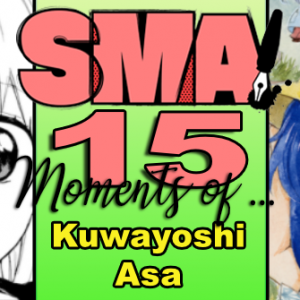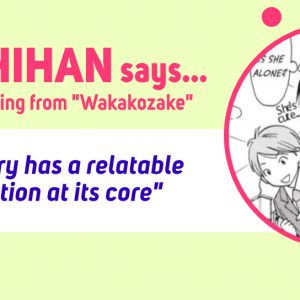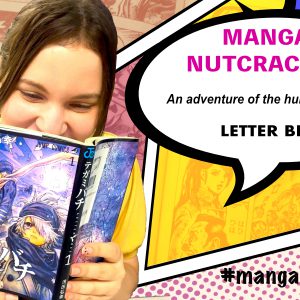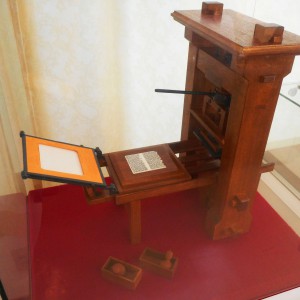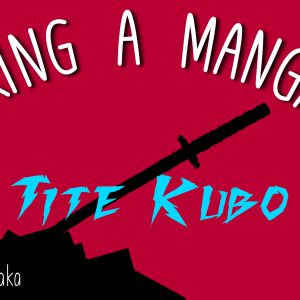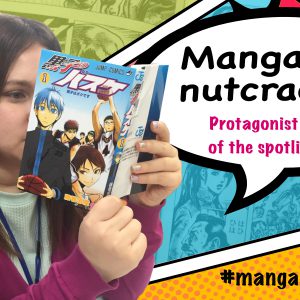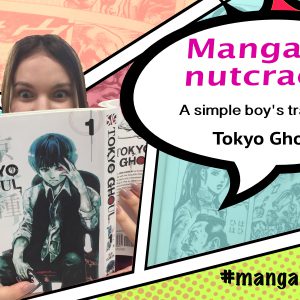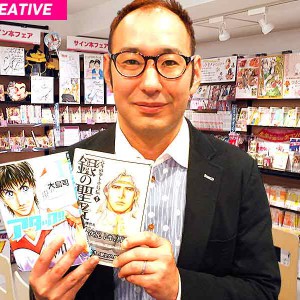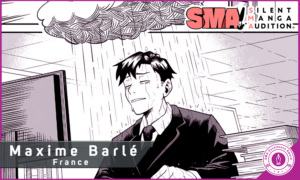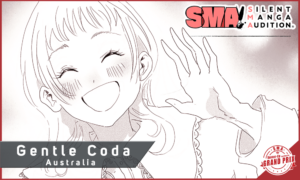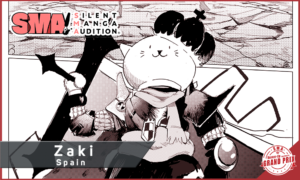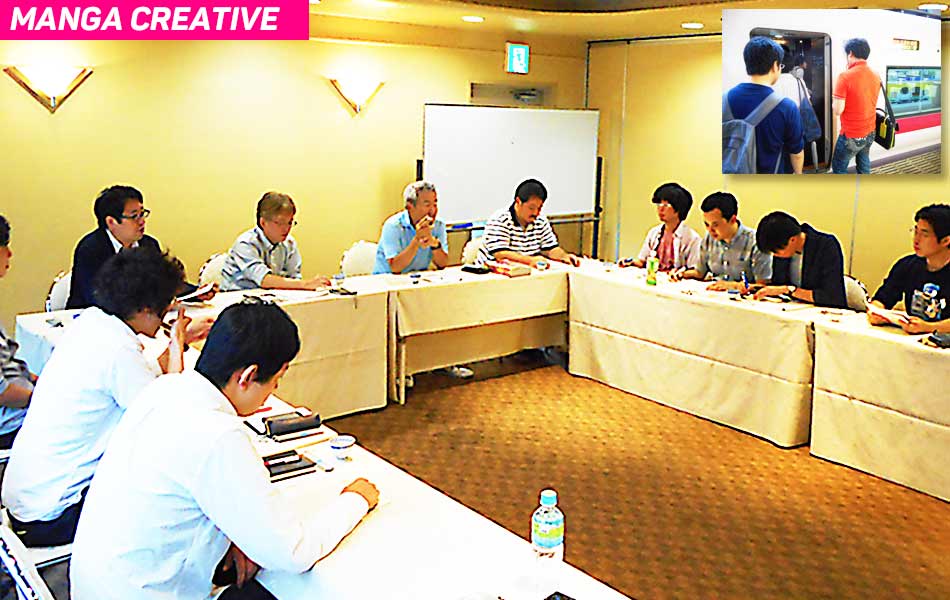
Hello everyone!
On today’s Manga Insider, I’m going to be introducing the ZENON/SMAC! joint company retreat that took place last week!
Japanese companies often arrange short outings for the purpose of employee education and work training. Staff might be sent to a temple for spiritual training, or go overseas to study a foreign language. The content varies depending on the goal and the nature of the company.
In our company, we go on a yearly retreat to develop our editorial skills through discussion and practice. So this time, rather than talking about actual manga creation, I’m going to share with you some of the ideas we learnt for improving a story!
For myself, and for the recently created SMAC! Editorial Team, this was our first company retreat. What can we expect!?
Right, off we go!
 This year’s joint company retreat took place in Ibaraki Prefecture, near a river called Kasumigaura. This place has it’s own interesting history, and was one of the spots where the Graf Zeppelin stopped on it’s round-the-world flight in 1929!
Our training began shortly after arriving at the hotel. Both editorial teams took their places around the table, and we discussed the “homework” that we had been assigned prior to the trip.
This year’s joint company retreat took place in Ibaraki Prefecture, near a river called Kasumigaura. This place has it’s own interesting history, and was one of the spots where the Graf Zeppelin stopped on it’s round-the-world flight in 1929!
Our training began shortly after arriving at the hotel. Both editorial teams took their places around the table, and we discussed the “homework” that we had been assigned prior to the trip.
 This homework was to create a “Sandai-Banashi” (three-topic-story). This is a kind of story that needs to be created using three keywords. It originated from Japanese Rakugo (Do you remember? In MANGA INSIDER MAYU #6, Mr. Yokoyama mentioned he had to make a Sandai-banashi as one of his tests for getting into the company!) In Japanese media-related companies, Sandai-banashi is often used as a test or assignment.
The three keywords that we were given were “retro”, “spoilers” and “enlightenment”. Even using the same keywords, everyone’s stories were completely different! For example “The story of an ordinary man whose life is ruined by spoilers”, “The story of a robot from the future and a student taking entrance exams” or “The story of a secret organization hidden in world of baseball” etc. Each individual made full use of their creativity and the line-up was brimming with variety! (Among those stories, Andrew’s tale of a woman who wanted to eat illegal sushi at a legendary sushi shop was very well-received! Well done!)
This homework was to create a “Sandai-Banashi” (three-topic-story). This is a kind of story that needs to be created using three keywords. It originated from Japanese Rakugo (Do you remember? In MANGA INSIDER MAYU #6, Mr. Yokoyama mentioned he had to make a Sandai-banashi as one of his tests for getting into the company!) In Japanese media-related companies, Sandai-banashi is often used as a test or assignment.
The three keywords that we were given were “retro”, “spoilers” and “enlightenment”. Even using the same keywords, everyone’s stories were completely different! For example “The story of an ordinary man whose life is ruined by spoilers”, “The story of a robot from the future and a student taking entrance exams” or “The story of a secret organization hidden in world of baseball” etc. Each individual made full use of their creativity and the line-up was brimming with variety! (Among those stories, Andrew’s tale of a woman who wanted to eat illegal sushi at a legendary sushi shop was very well-received! Well done!)
 Our next task was to “correct a scenario”. Mr. Horie handed out a poorly written script, which we had to read, and then point out any inconsistencies. This script was supposed to be for a drama based on a ZENON manga, but finding the faults was surprisingly difficult! When you’re watching a TV show, it’s easy to nitpick, but it’s a lot harder to find that sort of thing when you’re reading it in script-form! Besides the character inconsistencies, a bigger problem lay in the overall scenario. You have to question the realism of the story. “Could something like this actually happen?” Plot problems seem even more ridiculous on screen than they do in a manga. These are the “blind spots” that Mr. Horie is always talking about… Finding and correcting all the blind spots might be an eternal problem for creators.
Since both editorial teams were gathered in one place, it was an excellent opportunity to discuss story creation tips. Our president Mr. Horie, an experienced editor in his own right, gave us lots of valuable advice!
Our next task was to “correct a scenario”. Mr. Horie handed out a poorly written script, which we had to read, and then point out any inconsistencies. This script was supposed to be for a drama based on a ZENON manga, but finding the faults was surprisingly difficult! When you’re watching a TV show, it’s easy to nitpick, but it’s a lot harder to find that sort of thing when you’re reading it in script-form! Besides the character inconsistencies, a bigger problem lay in the overall scenario. You have to question the realism of the story. “Could something like this actually happen?” Plot problems seem even more ridiculous on screen than they do in a manga. These are the “blind spots” that Mr. Horie is always talking about… Finding and correcting all the blind spots might be an eternal problem for creators.
Since both editorial teams were gathered in one place, it was an excellent opportunity to discuss story creation tips. Our president Mr. Horie, an experienced editor in his own right, gave us lots of valuable advice!
 First of all, there’s “self improvement”. An author’s personality and preferences appears very clearly in their writing. So it’s important to try new things and gain as much life experience as possible. It may sound a little indirect, but this is the number one thing that you can do to enrich your writing!
The second thing is “drawing/writing to make people happy”. Distinctive characters are the essence of a good manga, but it’s no good if the author creates characters that only he or she enjoys. You have to think about the readers, not in the sense of worrying about their opinions, but by asking yourself “What do I have to offer that can make people happy?” This is very important for every creator.
Next there’s “building up an idea before you make it into a manga”. This is a trick that we learned during our training. A famous Japanese writer of historical novels, Ryotaro Shiba, would keep talking about it to the people near him whenever he had a new idea. Regardless of how good or bad the idea was, each time he told someone, he got better at describing the story, and the novel became more and more interesting. This method by the Japanese “novel master” would definitely work for the creation of manga too! If you think you came up to a wonderful idea, it is also important to mature them before making it public.
Finally, when making a story, you have to always keep a character’s “kaku” (格) in mind. “Kaku” is a Japanese concept that refers to one’s overall level, or quality, as a human being. A character with high kaku will be respected by a lot of people, whereas a character with low kaku will be despised. A person with high kaku will never brag or flaunt their strength, and this is why you need side characters to explain how amazing they are. For example, Ryo Saeba would never punch someone, or arrogantly announce that he is the City Hunter. Like-wise, Kenshiro would never pick a fight with someone weaker than himself, or brag about his strength (he has Lin & Bat to tell the readers how amazing he is!) If your heroes do something underhanded, that someone of their level shouldn’t be doing, the readers will sense it, and feel cheated. When you’re trying to figure out how to get your hero out of a tough spot, keep their kaku in mind!
Through this company retreat, we learned a lot about making a good story! When you draw your next manga, try to keep Mr. Horie’s words in mind. I’m such that it will lead to a better work!
First of all, there’s “self improvement”. An author’s personality and preferences appears very clearly in their writing. So it’s important to try new things and gain as much life experience as possible. It may sound a little indirect, but this is the number one thing that you can do to enrich your writing!
The second thing is “drawing/writing to make people happy”. Distinctive characters are the essence of a good manga, but it’s no good if the author creates characters that only he or she enjoys. You have to think about the readers, not in the sense of worrying about their opinions, but by asking yourself “What do I have to offer that can make people happy?” This is very important for every creator.
Next there’s “building up an idea before you make it into a manga”. This is a trick that we learned during our training. A famous Japanese writer of historical novels, Ryotaro Shiba, would keep talking about it to the people near him whenever he had a new idea. Regardless of how good or bad the idea was, each time he told someone, he got better at describing the story, and the novel became more and more interesting. This method by the Japanese “novel master” would definitely work for the creation of manga too! If you think you came up to a wonderful idea, it is also important to mature them before making it public.
Finally, when making a story, you have to always keep a character’s “kaku” (格) in mind. “Kaku” is a Japanese concept that refers to one’s overall level, or quality, as a human being. A character with high kaku will be respected by a lot of people, whereas a character with low kaku will be despised. A person with high kaku will never brag or flaunt their strength, and this is why you need side characters to explain how amazing they are. For example, Ryo Saeba would never punch someone, or arrogantly announce that he is the City Hunter. Like-wise, Kenshiro would never pick a fight with someone weaker than himself, or brag about his strength (he has Lin & Bat to tell the readers how amazing he is!) If your heroes do something underhanded, that someone of their level shouldn’t be doing, the readers will sense it, and feel cheated. When you’re trying to figure out how to get your hero out of a tough spot, keep their kaku in mind!
Through this company retreat, we learned a lot about making a good story! When you draw your next manga, try to keep Mr. Horie’s words in mind. I’m such that it will lead to a better work!
 In the next episode of Manga insider, we’re going to focus on making “tankoubon” (a separate volume of manga)
Do you think that making a tankoubon is just a matter of collecting all the manga into one book? It’s not that simple! There’s a lot that goes on behind the scenes.
Is there anything that you wanto know about manga creation? Do you have any questions you want to ask an actual editor?
Leave a comment, and I’ll answer as best I can!
I am also planning for an article for answering your questions, so don’t miss it!
[catlist name=”MANGA INSIDER MAYU” thumbnail=”yes” thumbnail_size=160 content=”no” date=”yes” dateformat=”M j, Y G:i” template=page_list]
In the next episode of Manga insider, we’re going to focus on making “tankoubon” (a separate volume of manga)
Do you think that making a tankoubon is just a matter of collecting all the manga into one book? It’s not that simple! There’s a lot that goes on behind the scenes.
Is there anything that you wanto know about manga creation? Do you have any questions you want to ask an actual editor?
Leave a comment, and I’ll answer as best I can!
I am also planning for an article for answering your questions, so don’t miss it!
[catlist name=”MANGA INSIDER MAYU” thumbnail=”yes” thumbnail_size=160 content=”no” date=”yes” dateformat=”M j, Y G:i” template=page_list]
 This year’s joint company retreat took place in Ibaraki Prefecture, near a river called Kasumigaura. This place has it’s own interesting history, and was one of the spots where the Graf Zeppelin stopped on it’s round-the-world flight in 1929!
Our training began shortly after arriving at the hotel. Both editorial teams took their places around the table, and we discussed the “homework” that we had been assigned prior to the trip.
This year’s joint company retreat took place in Ibaraki Prefecture, near a river called Kasumigaura. This place has it’s own interesting history, and was one of the spots where the Graf Zeppelin stopped on it’s round-the-world flight in 1929!
Our training began shortly after arriving at the hotel. Both editorial teams took their places around the table, and we discussed the “homework” that we had been assigned prior to the trip.
 This homework was to create a “Sandai-Banashi” (three-topic-story). This is a kind of story that needs to be created using three keywords. It originated from Japanese Rakugo (Do you remember? In MANGA INSIDER MAYU #6, Mr. Yokoyama mentioned he had to make a Sandai-banashi as one of his tests for getting into the company!) In Japanese media-related companies, Sandai-banashi is often used as a test or assignment.
The three keywords that we were given were “retro”, “spoilers” and “enlightenment”. Even using the same keywords, everyone’s stories were completely different! For example “The story of an ordinary man whose life is ruined by spoilers”, “The story of a robot from the future and a student taking entrance exams” or “The story of a secret organization hidden in world of baseball” etc. Each individual made full use of their creativity and the line-up was brimming with variety! (Among those stories, Andrew’s tale of a woman who wanted to eat illegal sushi at a legendary sushi shop was very well-received! Well done!)
This homework was to create a “Sandai-Banashi” (three-topic-story). This is a kind of story that needs to be created using three keywords. It originated from Japanese Rakugo (Do you remember? In MANGA INSIDER MAYU #6, Mr. Yokoyama mentioned he had to make a Sandai-banashi as one of his tests for getting into the company!) In Japanese media-related companies, Sandai-banashi is often used as a test or assignment.
The three keywords that we were given were “retro”, “spoilers” and “enlightenment”. Even using the same keywords, everyone’s stories were completely different! For example “The story of an ordinary man whose life is ruined by spoilers”, “The story of a robot from the future and a student taking entrance exams” or “The story of a secret organization hidden in world of baseball” etc. Each individual made full use of their creativity and the line-up was brimming with variety! (Among those stories, Andrew’s tale of a woman who wanted to eat illegal sushi at a legendary sushi shop was very well-received! Well done!)
 Our next task was to “correct a scenario”. Mr. Horie handed out a poorly written script, which we had to read, and then point out any inconsistencies. This script was supposed to be for a drama based on a ZENON manga, but finding the faults was surprisingly difficult! When you’re watching a TV show, it’s easy to nitpick, but it’s a lot harder to find that sort of thing when you’re reading it in script-form! Besides the character inconsistencies, a bigger problem lay in the overall scenario. You have to question the realism of the story. “Could something like this actually happen?” Plot problems seem even more ridiculous on screen than they do in a manga. These are the “blind spots” that Mr. Horie is always talking about… Finding and correcting all the blind spots might be an eternal problem for creators.
Since both editorial teams were gathered in one place, it was an excellent opportunity to discuss story creation tips. Our president Mr. Horie, an experienced editor in his own right, gave us lots of valuable advice!
Our next task was to “correct a scenario”. Mr. Horie handed out a poorly written script, which we had to read, and then point out any inconsistencies. This script was supposed to be for a drama based on a ZENON manga, but finding the faults was surprisingly difficult! When you’re watching a TV show, it’s easy to nitpick, but it’s a lot harder to find that sort of thing when you’re reading it in script-form! Besides the character inconsistencies, a bigger problem lay in the overall scenario. You have to question the realism of the story. “Could something like this actually happen?” Plot problems seem even more ridiculous on screen than they do in a manga. These are the “blind spots” that Mr. Horie is always talking about… Finding and correcting all the blind spots might be an eternal problem for creators.
Since both editorial teams were gathered in one place, it was an excellent opportunity to discuss story creation tips. Our president Mr. Horie, an experienced editor in his own right, gave us lots of valuable advice!
 First of all, there’s “self improvement”. An author’s personality and preferences appears very clearly in their writing. So it’s important to try new things and gain as much life experience as possible. It may sound a little indirect, but this is the number one thing that you can do to enrich your writing!
The second thing is “drawing/writing to make people happy”. Distinctive characters are the essence of a good manga, but it’s no good if the author creates characters that only he or she enjoys. You have to think about the readers, not in the sense of worrying about their opinions, but by asking yourself “What do I have to offer that can make people happy?” This is very important for every creator.
Next there’s “building up an idea before you make it into a manga”. This is a trick that we learned during our training. A famous Japanese writer of historical novels, Ryotaro Shiba, would keep talking about it to the people near him whenever he had a new idea. Regardless of how good or bad the idea was, each time he told someone, he got better at describing the story, and the novel became more and more interesting. This method by the Japanese “novel master” would definitely work for the creation of manga too! If you think you came up to a wonderful idea, it is also important to mature them before making it public.
Finally, when making a story, you have to always keep a character’s “kaku” (格) in mind. “Kaku” is a Japanese concept that refers to one’s overall level, or quality, as a human being. A character with high kaku will be respected by a lot of people, whereas a character with low kaku will be despised. A person with high kaku will never brag or flaunt their strength, and this is why you need side characters to explain how amazing they are. For example, Ryo Saeba would never punch someone, or arrogantly announce that he is the City Hunter. Like-wise, Kenshiro would never pick a fight with someone weaker than himself, or brag about his strength (he has Lin & Bat to tell the readers how amazing he is!) If your heroes do something underhanded, that someone of their level shouldn’t be doing, the readers will sense it, and feel cheated. When you’re trying to figure out how to get your hero out of a tough spot, keep their kaku in mind!
Through this company retreat, we learned a lot about making a good story! When you draw your next manga, try to keep Mr. Horie’s words in mind. I’m such that it will lead to a better work!
First of all, there’s “self improvement”. An author’s personality and preferences appears very clearly in their writing. So it’s important to try new things and gain as much life experience as possible. It may sound a little indirect, but this is the number one thing that you can do to enrich your writing!
The second thing is “drawing/writing to make people happy”. Distinctive characters are the essence of a good manga, but it’s no good if the author creates characters that only he or she enjoys. You have to think about the readers, not in the sense of worrying about their opinions, but by asking yourself “What do I have to offer that can make people happy?” This is very important for every creator.
Next there’s “building up an idea before you make it into a manga”. This is a trick that we learned during our training. A famous Japanese writer of historical novels, Ryotaro Shiba, would keep talking about it to the people near him whenever he had a new idea. Regardless of how good or bad the idea was, each time he told someone, he got better at describing the story, and the novel became more and more interesting. This method by the Japanese “novel master” would definitely work for the creation of manga too! If you think you came up to a wonderful idea, it is also important to mature them before making it public.
Finally, when making a story, you have to always keep a character’s “kaku” (格) in mind. “Kaku” is a Japanese concept that refers to one’s overall level, or quality, as a human being. A character with high kaku will be respected by a lot of people, whereas a character with low kaku will be despised. A person with high kaku will never brag or flaunt their strength, and this is why you need side characters to explain how amazing they are. For example, Ryo Saeba would never punch someone, or arrogantly announce that he is the City Hunter. Like-wise, Kenshiro would never pick a fight with someone weaker than himself, or brag about his strength (he has Lin & Bat to tell the readers how amazing he is!) If your heroes do something underhanded, that someone of their level shouldn’t be doing, the readers will sense it, and feel cheated. When you’re trying to figure out how to get your hero out of a tough spot, keep their kaku in mind!
Through this company retreat, we learned a lot about making a good story! When you draw your next manga, try to keep Mr. Horie’s words in mind. I’m such that it will lead to a better work!
 In the next episode of Manga insider, we’re going to focus on making “tankoubon” (a separate volume of manga)
Do you think that making a tankoubon is just a matter of collecting all the manga into one book? It’s not that simple! There’s a lot that goes on behind the scenes.
Is there anything that you wanto know about manga creation? Do you have any questions you want to ask an actual editor?
Leave a comment, and I’ll answer as best I can!
I am also planning for an article for answering your questions, so don’t miss it!
[catlist name=”MANGA INSIDER MAYU” thumbnail=”yes” thumbnail_size=160 content=”no” date=”yes” dateformat=”M j, Y G:i” template=page_list]
In the next episode of Manga insider, we’re going to focus on making “tankoubon” (a separate volume of manga)
Do you think that making a tankoubon is just a matter of collecting all the manga into one book? It’s not that simple! There’s a lot that goes on behind the scenes.
Is there anything that you wanto know about manga creation? Do you have any questions you want to ask an actual editor?
Leave a comment, and I’ll answer as best I can!
I am also planning for an article for answering your questions, so don’t miss it!
[catlist name=”MANGA INSIDER MAYU” thumbnail=”yes” thumbnail_size=160 content=”no” date=”yes” dateformat=”M j, Y G:i” template=page_list] 




